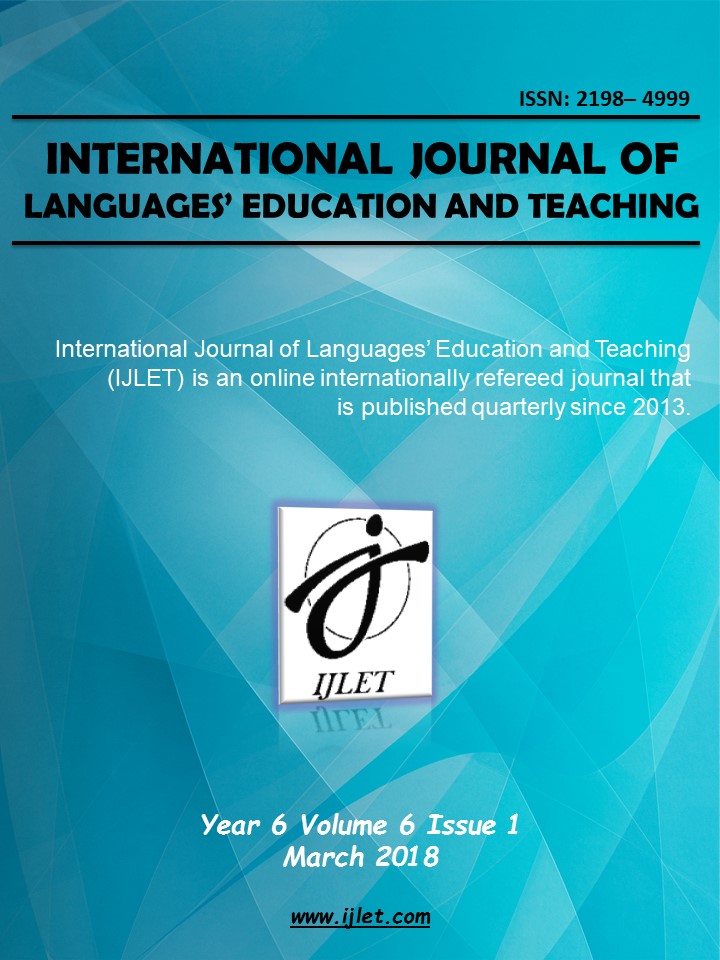Author :
Abstract
Keywords
Abstract
This research aims at revealing: the blended learning; the advantages of blended learning in the 21st century; the application of blended learning in the classroom. It is kinds of qualitative research which are aimed at revealing the blended learning for students' motivation in studying the English language. There is still lack of research about the blended learning in students' motivation; therefore, this research is significant to be conducted. The finding of the research can be described as follows: First, blended learning is learning the model that combine the positive sides of traditional mode such as face to face model with improved technology use to keep, improve, and engage the student's motivation and involvement the new star of teaching and learning process. Second, blended learning improves the learning access to materials and learning activities, and it can support and enhance the role of teachers, the experiences of the students and the social environment. Third, there are four main steps in applying blended learning, i.e. planning, designing and developing the blended learning elements, implementing, reviewing and evaluating the design.
Keywords
- Al-Azawei, A., Parslow, P., & Lundqvist, K. (2017). Investigating the effect of learning styles in a blended e-learning system: An extension of the technology acceptance model (TAM). Australasian Journal of Educational Technology, 33(2), 4-5.
- Bath, D., & Bourke, J. (2010). Getting Started with Blended Learning. Griffith Institute for Higher Education.
- Cho, M. H., Lim, S., & Lee, K. (2017). Does documenting the regulation process on a blog enhance pre- service teachers’ self- and co-regulation in a collaborative project? Australasian Journal of Educational Technology, 33(4), 168-169.
- Coleman, H. (2010). The English Language in Development. British: British Council.
- Crawford, R., & Jenkins, L. (2017). Blended learning and team teaching: Adapting pedagogy in response to the changing digital tertiary environment. Australasian Journal of Educational Technology, 33(2), 51-52.
- Magil, C., Money, J., Wals, B., & Nixon, S. (2015). Can A Blended Learning Approach Enhance Students Transition Into Higher Education? A Study To Explore Perceptions, Engagement, and Progression. International Journal of Advancement in Education and Social Sciences, 3(2), 2-3.
- Fahivik, M. (2015). The Blended Classroom. Boston: 5836 Bergen.
- Horn, M. & Staker, H. (2015). Blended: Using Disruptive Innovation to Improve Schools. San Francisco: A Wiley Brand.
- Koc, S., Liu, Xiongyi., & Wachira, Patrick. (2015). Assessment in Online and Blended Learning Environments. America: Age Publishing Inc.
- McPheat, Sean. (2010). Motivation Skills. UK: MTD Training & Venus Publishing ApS.
- Primemr, C., Pachler, N., & Attwell, G. (2010). Towards Work-Based Mobile Learning; What We Can learn from the Fields of Work-based learning and Mobile learning. International Journal of Mobile and Blended Learning, 2(4), 1-3.
- Rosen, D. & Stewart, C. (2015). Blended learning for the Adult Education Classroom. America: Material.
- Saliba, Gina., Rankine, Lynnae., & Cortez, Hermy. (2013). Fundamentals of Blended Learning. Sydney: University of Western Sydney.
- Simasathiansophon, N. (2014). A Perspective on Blended-Learning Approach through Course Management System: Thailand‟s Case Study. International Journal of Information and Education Technology, 4(2), 172-173.
- Stein, J. & Graham, C. R. (2014). Essentials for Blended Learning: A Standards-Based Guide. New York: Routledge.
- Sulisworo, Dwi., Agustin, Sri., & Sudarmiyati, Endang. (2016). Cooperative-Blended Learning Using Moodle As An Open Source Learning Platform. International Journal Technology Enhanced Learning, 8(2), 2-10.
- Sulisworo, D., Yunita, L., & Komalasari, A. (2017). Which Mobile Learning is More Suitable on Physics Learning in Indonesia High School?. iJES, 5(1), 98-102.
- Sulisworo, D., Ishafit, I., & Firdausy, K. (2016). The development of mobile learning application using jigsaw technique. International Journal of Interactive Mobile Technologies (iJIM), 10(3), 11-16.
- Tomlinson, B. & Whittaker, C. (2013). Blended Learning in English Language Teaching: Course Design and Implementation. London: Brand and Design/D057.
- Wankle, C. & Blessinger, P. (2013). Increasing Students Engagement and Retention in e-Learning Environments: Web 2.0 and Blended Learning Technologies. UK: Emerald Group Publishing Limited.
- Watterston, Jim. (2012). Blended Learning: A Synthesis of Research Finding in Victorian Education. Melbourne: Ultranet and Digital Learning Branch Department of Education and Early Childhood Development.
- Watson, J. & Powell, A. (2015). Blending Learning: The Evolution of Online and Face-to-Face Education from 2008–2015. iNACOL, The International Association for K–12 Online Learning,http://www.inacol.org/.
- Whyte, S. (2015). Implementing and Researching Technological Innovation in Language Teaching. UK: Palgrave Macmillan.
